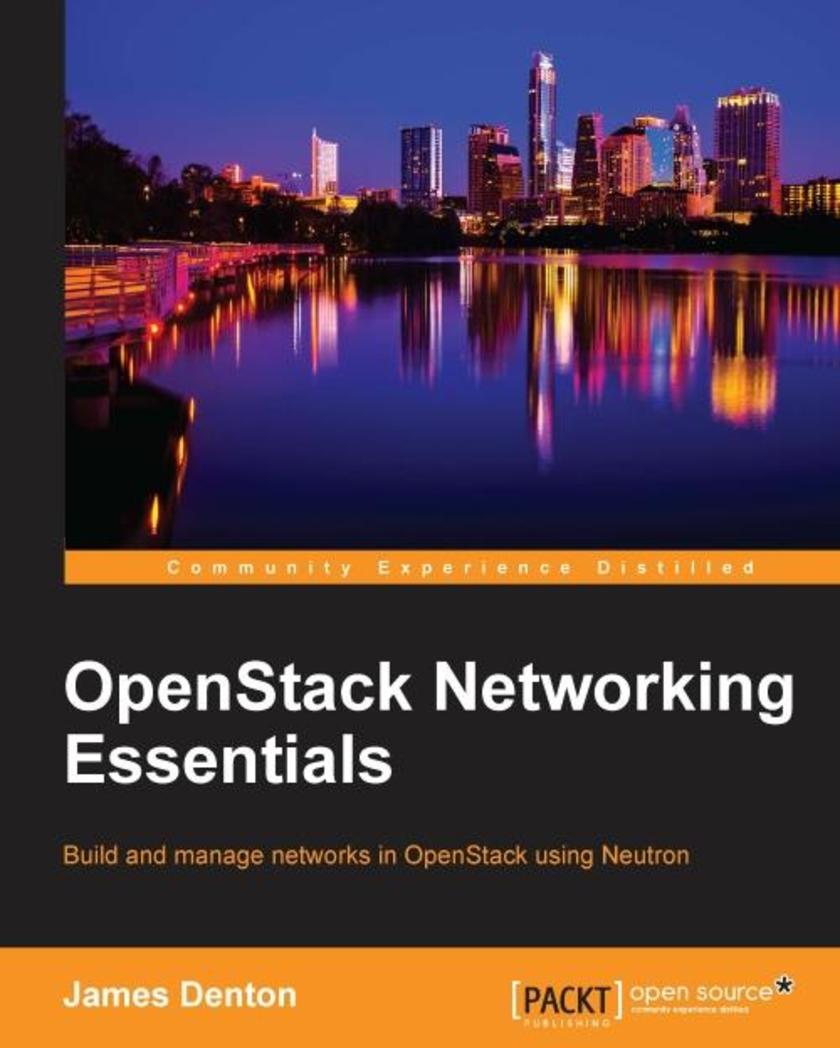
OpenStack Networking Essentials
¥71.93
Build and manage networks in OpenStack using Neutron About This Book Deploy an all-in-one cloud based on OpenStack Liberty (2015.2) using RDO Learn the fundamentals of the Neutron API including networks, subnets, and ports, and how to manage these resources in the cloud Build simple virtual network infrastructures in the cloud Who This Book Is For The book is for those who are new to OpenStack and Neutron who want to learn the cloud networking fundamentals and get started with OpenStack networking. Prior networking experience along with a virtual or physical server is recommended to follow along with the concepts demonstrated in the book. What You Will Learn Install the latest Liberty (2015.2) release of OpenStack using RDO in VirtualBox Discover the basics of the Neutron API, including networks, subnets, and ports Interact with Neutron using the CLI and Horizon dashboard Create networks and subnets that provide connectivity to instances Implement software routers that connect networks and provide network address translation Secure instances using Neutron's security group functionality In Detail The OpenStack Networking API offers users the ability to create and manage both basic and complex network architectures that blend the virtual and physical network infrastructure. This book kicks off by describing various components of Openstack Neutron and installing Ubuntu OpenStack based on Canonical's process. Further on, you will use various methods to interface with Neutron to create and manage network resources. You will also get to grips with the relationship between ports, networks, and subnets through diagrams and explanations, and see how the logical components are implemented via plugins and agents. Moving forward, you will learn how virtual switches are implemented and how to build Neutron routers. You will also configure networks, subnets, and routers to provide connectivity to instances using simple examples. At the end, you will configure and manage security groups, and will observe how these rules translate to iptables rules on the host machines. By the end of the book, you will be able to build basic network architectures using Neutron networks and routers in no time. Style and approach An easy-to-follow guide that covers the networking features of OpenStack and the core Neutron API components providing a solid foundation to deploy networks and instances.
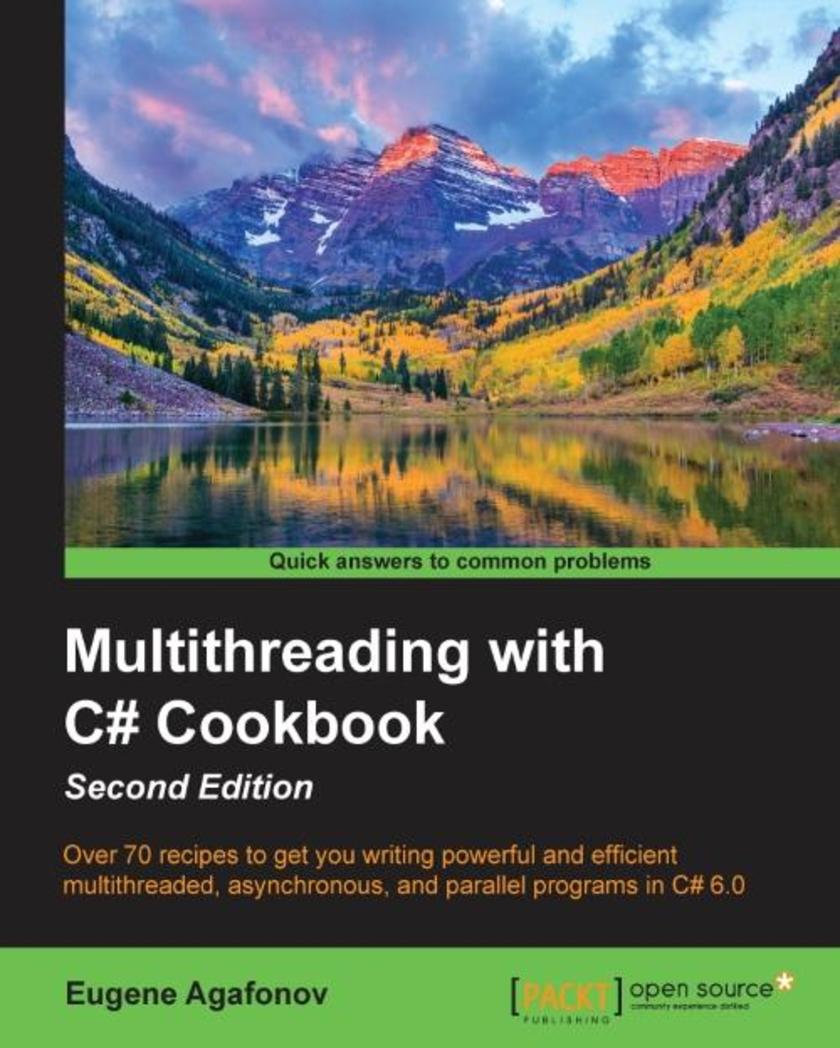
Multithreading with C# Cookbook - Second Edition
¥90.46
Over 70 recipes to get you writing powerful and efficient multithreaded, asynchronous, and parallel programs in C# 6.0 About This Book Rewritten and updated to take advantage of the latest C# 6 features Learn about multithreaded, asynchronous, and parallel programming through hands-on, code-first examples Use these recipes to build fast, scalable, and reliable applications in C# Who This Book Is For This book is aimed at those who are new to multithreaded programming, and who are looking for a quick and easy way to get started. It is assumed that you have some experience in C# and .NET already, and you should also be familiar with basic computer science terminology and basic algorithms and data structures. What You Will Learn Use C# 6.0 asynchronous language features Work with raw threads, synchronize threads, and coordinate their work Develop your own asynchronous API with Task Parallel Library Work effectively with a thread pool Scale up your server application with I/O threads Parallelize your LINQ queries with PLINQ Use common concurrent collections Apply different parallel programming patterns Use Reactive Extensions to run asynchronous operations and manage their options In Detail Multi-core processors are synonymous with computing speed and power in today’s world, which is why multithreading has become a key concern for C# developers. Multithreaded code helps you create effective, scalable, and responsive applications. This is an easy-to-follow guide that will show you difficult programming problems in context. You will learn how to solve them with practical, hands-on, recipes. With these recipes, you’ll be able to start creating your own scalable and reliable multithreaded applications. Starting from learning what a thread is, we guide you through the basics and then move on to more advanced concepts such as task parallel libraries, C# asynchronous functions, and much more. Rewritten to the latest C# specification, C# 6, and updated with new and modern recipes to help you make the most of the hardware you have available, this book will help you push the boundaries of what you thought possible in C#. Style and approach This is an easy-to-follow guide full of hands-on examples of real-world multithreading tasks. Each topic is explained and placed in context, and for the more inquisitive, there are also more in-depth details of the concepts used.
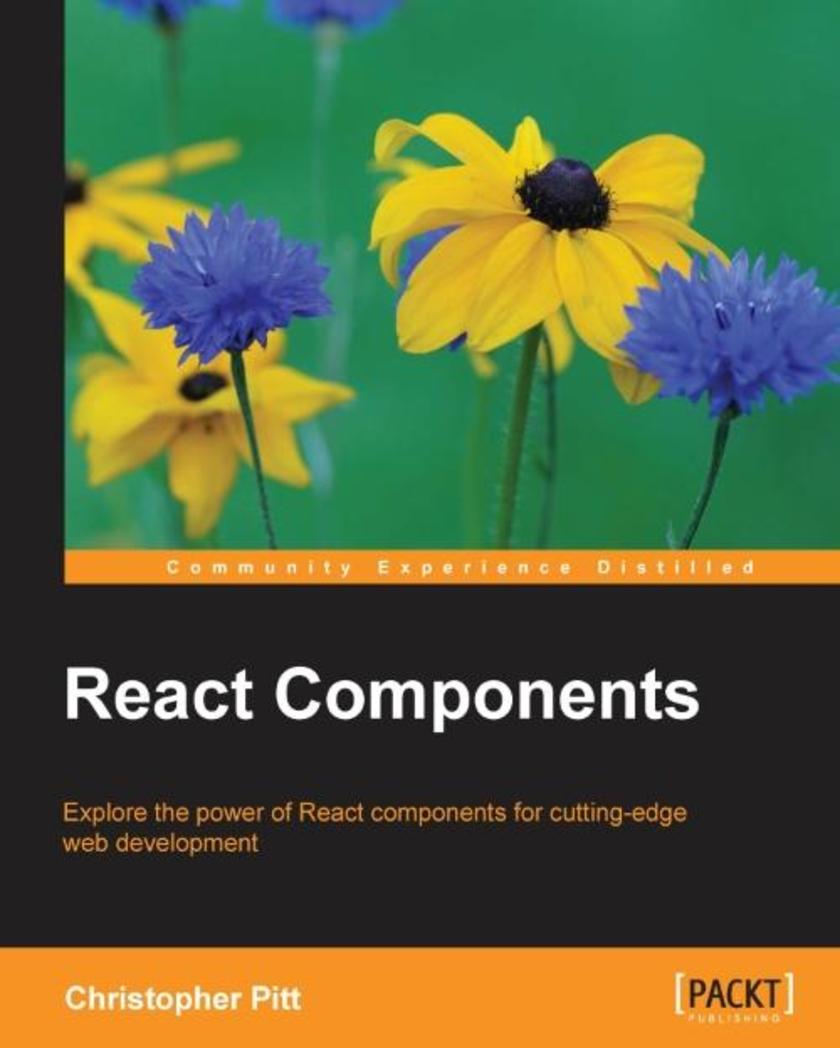
React Components
¥63.21
Explore the power of React components for cutting-edge web development About This Book Learn to build better websites by creating a variety of different components in React Conceptualize the design and build maintainable web apps with the help of components A fast-paced guide to help you learn about component-based development in React Who This Book Is For This book is ideal for developers who are familiar with the basics of React and are looking for a guide to building a wide range of components as well as develop component-driven UIs. What You Will Learn How to structure an app into components Working with nested components Work with nested components Set up communication across components Style the existing components Work with Material Design as a component Render components on the server Make the best of design patterns Make the app pluggable In Detail The reader will learn how to use React and its component-based architecture in order to develop modern user interfaces. A new holistic way of thinking about UI development will establish throughout this book and the reader will discover the power of React components with many examples. After reading the book and following the example application, the reader has built a small to a mid-size application with React using a component based UI architecture. The book will take the reader through a journey to discover the benefits of component-based user interfaces over the classical MVC architecture. Throughout the book, the reader will develop a wide range of components and then bring them together to build a component-based UI. By the end of this book, readers would have learned several techniques to build powerful components and how the component-based development is beneficial over regular web development. Style and approach This book is a compact, example-driven guide that provides a step-by-step approach.
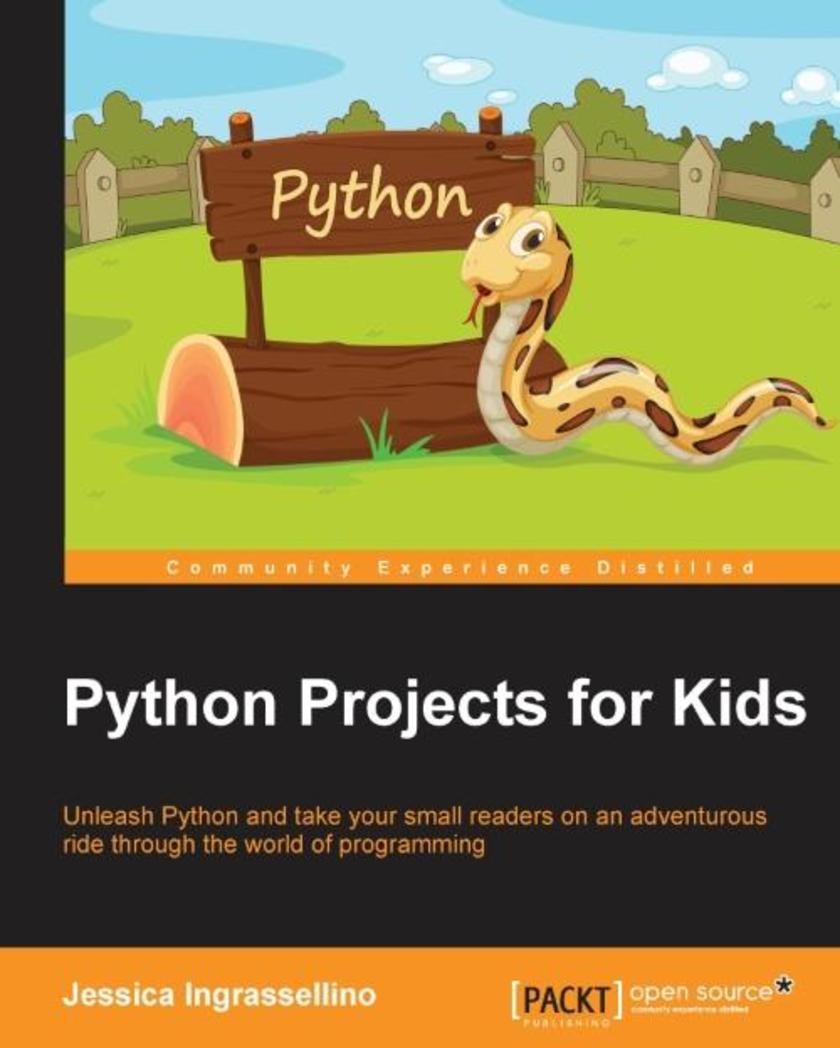
Python Projects for Kids
¥63.21
Unleash Python and take your small readers on an adventurous ride through the world of programming About This Book Learn to start using Python for some simple programming tasks such as doing easy mathematical calculations. Use logic and control loops to build a nice interesting game. Get to grips with working with data and, once you're comfortable with that, you'll be introduced to Pygame, which will help you wrap up the book with a cool game. Who This Book Is For This book is for kids (aged 10 and over). This is book is intended for absolute beginners who lack any knowledge of computing or programming languages and want to get started in the world of programming. What You Will Learn Start fiddling with Python's variables, build functions and interact with users Build your own calculator using the Math Library Train Python to make logical decisions Work with moving 2D objects on-screen Understand the Pygame Library and build your very own game! Write a cool program to manage inventories in your backpack In Detail Kids are always the most fast-paced and enthusiastic learners, and are naturally willing to build stuff that looks like magic at the end (when it works!). Programming can be one such magic. Being able to write a program that works helps them feel they've really achieved something. Kids today are very tech-savvy and cannot wait to enter the fast-paced digital world. Because Python is one of the most popular languages and has a syntax that is quite simple to understand, even kids are eager to use it as a stepping stone to learning programming languages. This book will cover projects that are simple and fun, and teach kids how to write Python code that works. The book will teach the basics of Python programming, installation, and so on and then will move on to projects. A total of three projects, with each and every step explained carefully, without any assumption of previous experience. Style and approach The book will take a light approach in guiding the little readers through the world of Python. The main idea is to teach by example and let the readers have as much exercises to do, so that they learn faster and can apply their own ideas to the existing examples. The book should get them thinking, by the end, on where they can go next with such a powerful tool at their disposal.
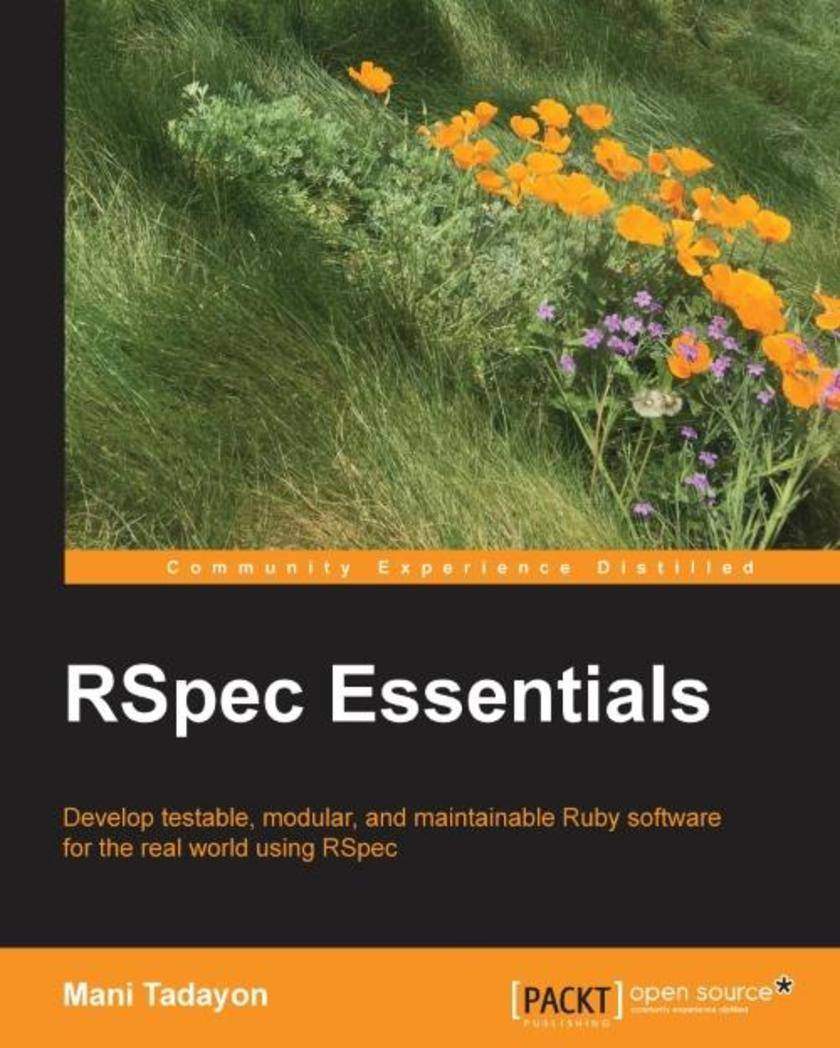
RSpec Essentials
¥71.93
Develop testable, modular, and maintainable Ruby software for the real world using RSpec About This Book Explore the concept of testability and how to implement tests that deliver the most value Maximize the quality of your Ruby code through a wide variety of tests Master the real-world tradeoffs of testing through detailed examples supported by in-depth discussion Who This Book Is For This book is aimed at the software engineer who wants to make their code more reliable and their development process easier. It is also aimed at test engineers who need to automate the testing of complex systems. Knowledge of Ruby is helpful, but even someone new to the language should find it easy to follow the code and tests. What You Will Learn Identify a unit of software for the purposes of testing Manage test states with hooks, fixtures, and mocks Handle external web services in tests using various techniques Configure RSpec flexibly and cleanly using support code and environment variables Interact with rich web apps in tests using Capybara Build the right feature with behavior-driven development Customize matchers and failure messages Verify correct development and production environments In Detail This book will teach you how to use RSpec to write high-value tests for real-world code. We start with the key concepts of the unit and testability, followed by hands-on exploration of key features. From the beginning, we learn how to integrate tests into the overall development process to help create high-quality code, avoiding the dangers of testing for its own sake. We build up sample applications and their corresponding tests step by step, from simple beginnings to more sophisticated versions that include databases and external web services. We devote three chapters to web applications with rich JavaScript user interfaces, building one from the ground up using behavior-driven development (BDD) and test-driven development (TDD). The code examples are detailed enough to be realistic while simple enough to be easily understood. Testing concepts, development methodologies, and engineering tradeoffs are discussed in detail as they arise. This approach is designed to foster the reader’s ability to make well-informed decisions on their own. Style and approach This comprehensive tutorial is packed with real-world examples of testing with RSpec. The most important features of RSpec are introduced in the early chapters and are used in examples of growing complexity in the following chapters. Concepts and methodologies are discussed in detail.
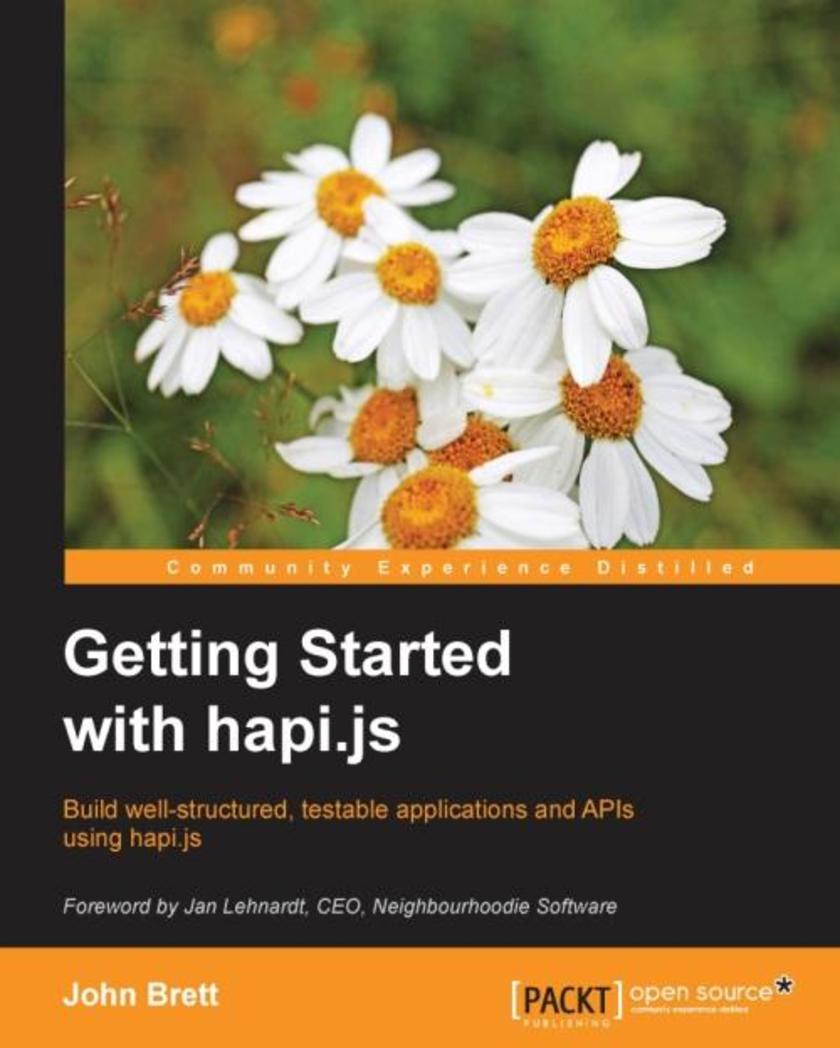
Getting Started with hapi.js
¥54.49
Build well-structured, testable applications and APIs using hapi.js About This Book With the help of this book, you will improve your productivity as a developer and that of your team by focusing on business logic utilizing the structure that Hapi.js provides You will be introduced to a real-world problem and we’ll demonstrate how to use the tools Hapi provides to resolve it This is the only book with a learn-by-example approach Who This Book Is For If you are a JavaScript developer with or without Node.js experience and would like to learn to build applications, APIs, and web servers with the best-in-class framework hapi.js, this book is perfect for you. What You Will Learn Increase your productivity by taking advantage of the out-of-the-box features hapi.js provides Build secure API servers Create websites and applications using your favorite templating language Leverage hapi.js plugins to better structure your codebase Simplify your security workflows with the built-in authentication and authorization functionality of hapi.js Ensure application reliability with testing and code coverage Reduce code complexity using reusable validation logic with joi Gather insight into your application performance via logging Start the journey to building robust production-ready applications In Detail This book will introduce hapi.js and walk you through the creation of your first working application using the out-of-the-box features hapi.js provides. Packed with real-world problems and examples, this book introduces some of the basic concepts of hapi.js and Node.js and takes you through the typical journey you'll face when developing an application. Starting with easier concepts such as routing requests, building APIs serving JSON, using templates to build websites and applications, and connecting databases, we then move on to more complex problems such as authentication, model validation, caching, and techniques for structuring your codebase to scale gracefully. You will also develop skills to ensure your application's reliability through testing, code coverage, and logging. By the end of this book, you'll be equipped with all the skills you need to build your first fully featured application. This book will be invaluable if you are investigating Node.js frameworks or planning on using hapi.js in your next project. Style and approach This book takes a step-by-step approach to building an application or web server using hapi.js though examples.
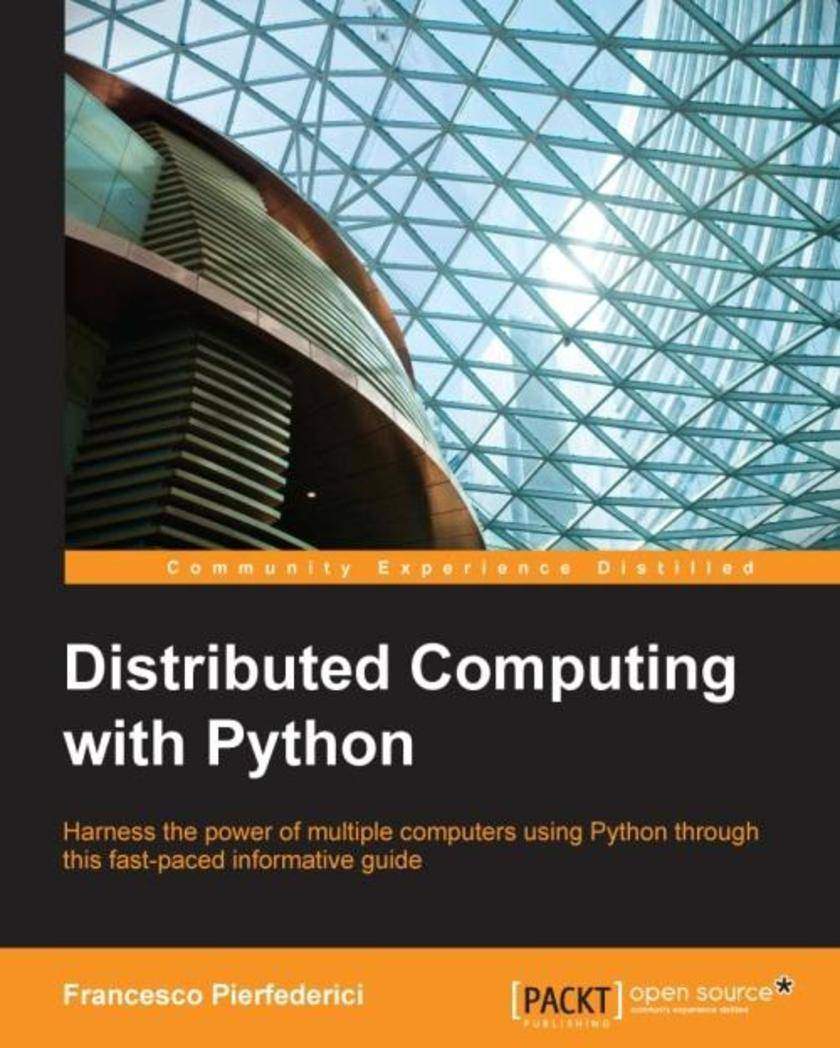
Distributed Computing with Python
¥63.21
Harness the power of multiple computers using Python through this fast-paced informative guide About This Book You'll learn to write data processing programs in Python that are highly available, reliable, and fault tolerant Make use of Amazon Web Services along with Python to establish a powerful remote computation system Train Python to handle data-intensive and resource hungry applications Who This Book Is For This book is for Python developers who have developed Python programs for data processing and now want to learn how to write fast, efficient programs that perform CPU-intensive data processing tasks. What You Will Learn Get an introduction to parallel and distributed computing See synchronous and asynchronous programming Explore parallelism in Python Distributed application with Celery Python in the Cloud Python on an HPC cluster Test and debug distributed applications In Detail CPU-intensive data processing tasks have become crucial considering the complexity of the various big data applications that are used today. Reducing the CPU utilization per process is very important to improve the overall speed of applications. This book will teach you how to perform parallel execution of computations by distributing them across multiple processors in a single machine, thus improving the overall performance of a big data processing task. We will cover synchronous and asynchronous models, shared memory and file systems, communication between various processes, synchronization, and more. Style and Approach This example based, step-by-step guide will show you how to make the best of your hardware configuration using Python for distributing applications.
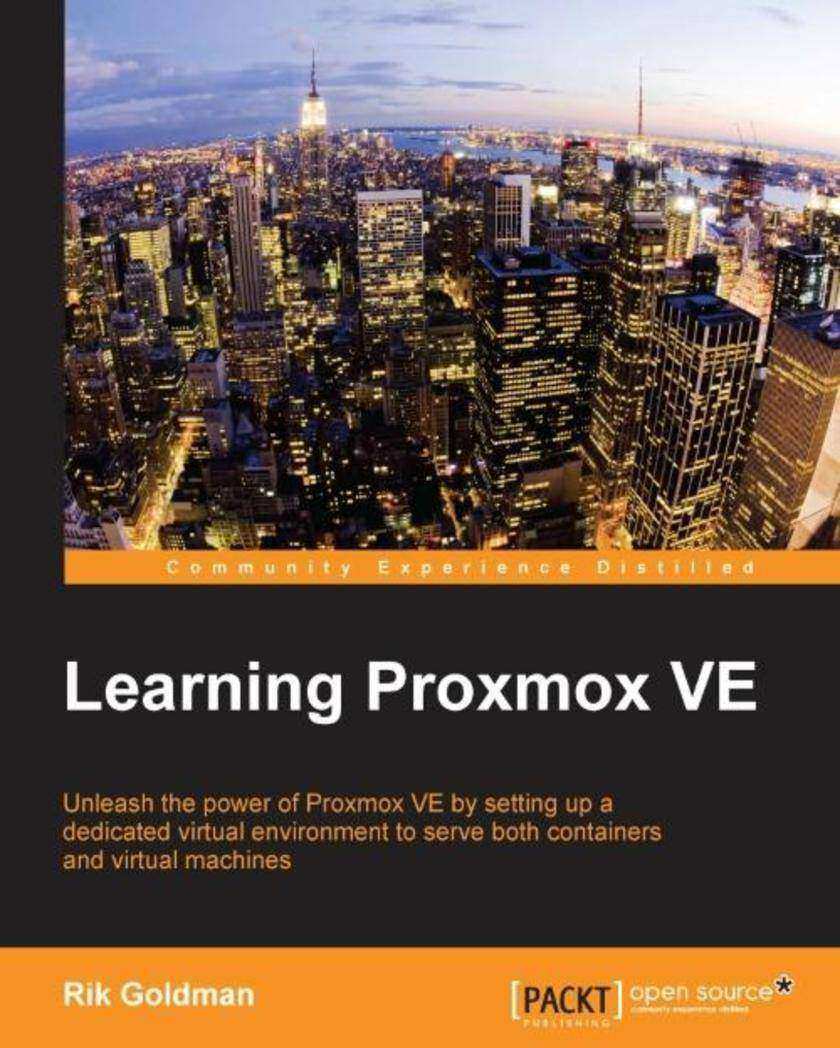
Learning Proxmox VE
¥80.65
Unleash the power of Proxmox VE by setting up a dedicated virtual environment to serve both containers and virtual machines About This Book Create virtual machines and containers from the comfort of your workstation using Proxmox VE's web-based management interface Maximize performance, security, and the quality of virtual services by tailoring container and virtual machine configurations based on established best practices Put theory to practice by deploying virtual servers that promise portability, modularity, flexibility, security, and quality of service at any scale Who This Book Is For This book is intended for server and system administrators and engineers who are eager to take advantage of the potential of virtual machines and containers to manage servers more efficiently and make the best use of resources, from energy consumption to hardware utilization and physical real estate What You Will Learn Install and configure Proxmox VE Create new virtual machines and containers Import container templates and virtual appliances Optimize virtual machine performance for common use cases Apply the latest security patches to a Proxmox VE host Contrast PVE virtual machines and containers to recognize their respective use cases Secure virtual machines and containers Assess the benefits of virtualization on budgets, server real estate, maintenance, and management time In Detail Proxmox VE 4.1 provides an open source, enterprise virtualization platform on which to host virtual servers as either virtual machines or containers. This book will support your practice of the requisite skills to successfully create, tailor, and deploy virtual machines and containers with Proxmox VE 4.1. Following a survey of PVE's features and characteristics,this book will contrast containers with virtual machines and establish cases for both. It walks through the installation of Proxmox VE, explores the creation of containers and virtual machines, and suggests best practices for virtual disk creation, network configuration, and Proxmox VE host and guest security. Throughout the book, you will navigate the Proxmox VE 4.1 web interface and explore options for command-line management. Style and approach This book is a practical exploration of the different processes and procedures, which are essential in beginning your journey to fluent creation and optimization of effective containers and virtual machines.
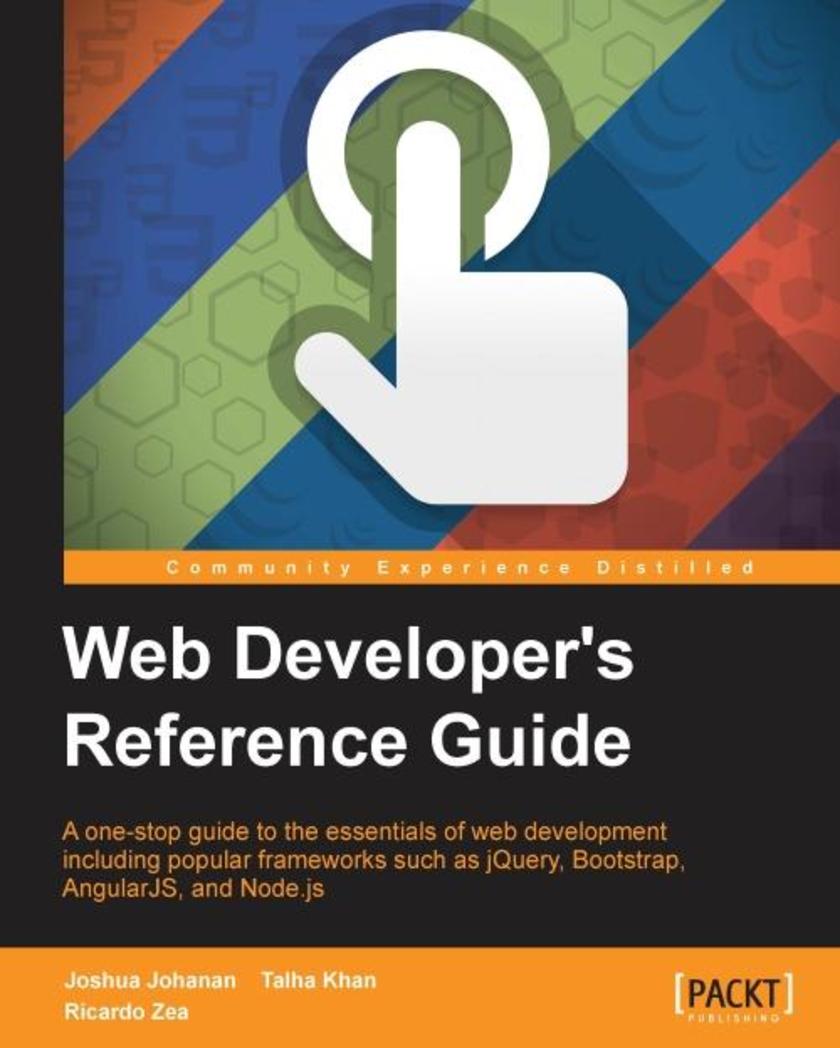
Web Developer's Reference Guide
¥80.65
A one-stop guide to the essentials of web development including popular frameworks such as jQuery, Bootstrap, AngularJS, and Node.js About This Book Understand the essential elements of HTML, CSS, and JavaScript, including how and when to use them Walk through three of the best and most popular web development frameworks – jQuery, Bootstrap, and AngularJS References for any function you will need in your day-to-day web development Who This Book Is For This book is perfect for beginners but more advanced web developers will also benefit. Laid out so you can refer to as much or as little as you need to, with this book you can exhaustively explore essential concepts for modern web developers. What You Will Learn Explore detailed explanations of all the major HTML elements and attributes, illustrated with examples Take a deep dive into CSS properties and functions and master their usage Find clear, concise de*ions of JavaScript syntax and expressions Recognize various JavaScript design patterns and learn the basics of JavaScript object-orientated programming Implement the latest ECMAScript 6 for client-side *ing in your web applications Discover new ways to develop your website's front end quickly and easily using Bootstrap Write JavaScript extensibly using jQuery-JavaScript's feature-rich library Delve into the key Node.js modules used in JavaScript server-side programming Access AngularJS 's important modules, controllers, directives, and services quickly In Detail This comprehensive reference guide takes you through each topic in web development and highlights the most popular and important elements of each area. Starting with HTML, you will learn key elements and attributes and how they relate to each other. Next, you will explore CSS pseudo-classes and pseudo-elements, followed by CSS properties and functions. This will introduce you to many powerful and new selectors. You will then move on to JavaScript. This section will not just introduce functions, but will provide you with an entire reference for the language and paradigms. You will discover more about three of the most popular frameworks today—Bootstrap, which builds on CSS, jQuery which builds on JavaScript, and AngularJS, which also builds on JavaScript. Finally, you will take a walk-through Node.js, which is a server-side framework that allows you to write programs in JavaScript. Style and approach This book is an easy-to-follow, comprehensive reference guide. Each topic, function, or element is listed methodically along with parameters, return values, and de*ions. Examples are also included to help you put the concepts to use quickly in the real world.

Babylon.js Essentials
¥54.49
Understand, train, and be ready to develop 3D Web applications/video games using the Babylon.js framework, even for beginners About This Book Understand the basics of 3D (along with the theory) before practicing Each mini-project provides previous features, alongside the new feature you are learning, to supply the examples Learn from the best of the best, a developer at Microsoft, France Who This Book Is For Babylon.JS Essentials is intended for developers who want to enter the world of 3D development for the Web, or developers who want to add the Babylon.js framework to their skill set. The notion of Oriented Object Programming would be helpful to understand the architecture of the Babylon.js framework. Also, a familiarity with Web development would be useful, to understand the principles used. What You Will Learn Understand what the TypeScript language is and its benefits (compared to JavaScript) in large projects such as 3D engines Learn the basics of 3D using Babylon.js without too much theory but with an emphasis on practice, for a better understanding of the architecture Know the usage of Material—a fundamental principle of 3D engines in Babylon.js—and then customize the appearance of 3D objects Integrate collisions and physics in gameplay. Understand the notion of impostor for physics simulation Manage, create, and spatialize audio tracks in 3D scenes Go further with the Babylon.js framework to create actions on events Create rendering effects provided by the Babylon.js framework, such as post-processes In Detail Are you familiar with HTML5Do you want to build exciting games and Web applicationsThen explore the exciting world of game and Web development with one of the best frameworks out there: Babylon.JS. Starting from the beginning, the book introduces the required basics for 3D development and the knowledge you need to use the Babylon.js framework. It focuses on the simplicity provided by Babylon.js and uses a combination of theory and practice. All the chapters are provided with example files ready to run; each example file provides the previously learned features of the framework. Finally, developers will be ready to easily understand new features added to the framework in the future. Style and approach The book is a comprehensive guide packed with ready-to-run examples with a mix of theory and practice.

Learning C# by Developing Games with Unity 5.x - Second Edition
¥80.65
Develop your first interactive 2D platformer game by learning the fundamentals of C# About This Book Get to grips with the fundamentals of *ing in C# with Unity Create an awesome, 2D platformer game from scratch using the principles of object-oriented programming and coding in C# This is a step-by-step guide to learn the fundamentals of C# *ing to develop GameObjects and master the basics of the new UI system in Unity Who This Book Is For The book is targeted at beginner level Unity developers with no programming experience. If you are a Unity developer and you wish to learn how to write C# *s and code by creating games, then this book is for you. What You Will Learn Understand the fundamentals of variables, methods, and code syntax in C# Get to know about techniques to turn your game idea into working project Use loops and collections efficiently in Unity to reduce the amount of code Develop a game using the object-oriented programming principles Generate infinite levels for your game Create and code a good-looking functional UI system for your game Publish and share your game with users In Detail Unity is a cross-platform game engine that is used to develop 2D and 3D video games. Unity 5 is the latest version, released in March 2015, and adds a real-time global illumination to the games, and its powerful new features help to improve a game’s efficiency. This book will get you started with programming behaviors in C# so you can create 2D games in Unity. You will begin by installing Unity and learning about its features, followed by creating a C# *. We will then deal with topics such as unity *ing for you to understand how codes work so you can create and use C# variables and methods. Moving forward, you will find out how to create, store, and retrieve data from collection of objects. You will also develop an understanding of loops and their use, and you’ll perform object-oriented programming. This will help you to turn your idea into a ready-to-code project and set up a Unity project for production. Finally, you will discover how to create the GameManager class to manage the game play loop, generate game levels, and develop a simple UI for the game. By the end of this book, you will have mastered the art of applying C# in Unity. Style and approach This is a step-by-step guide to developing a game from scratch by applying the fundamentals of C# and Unity *ing.
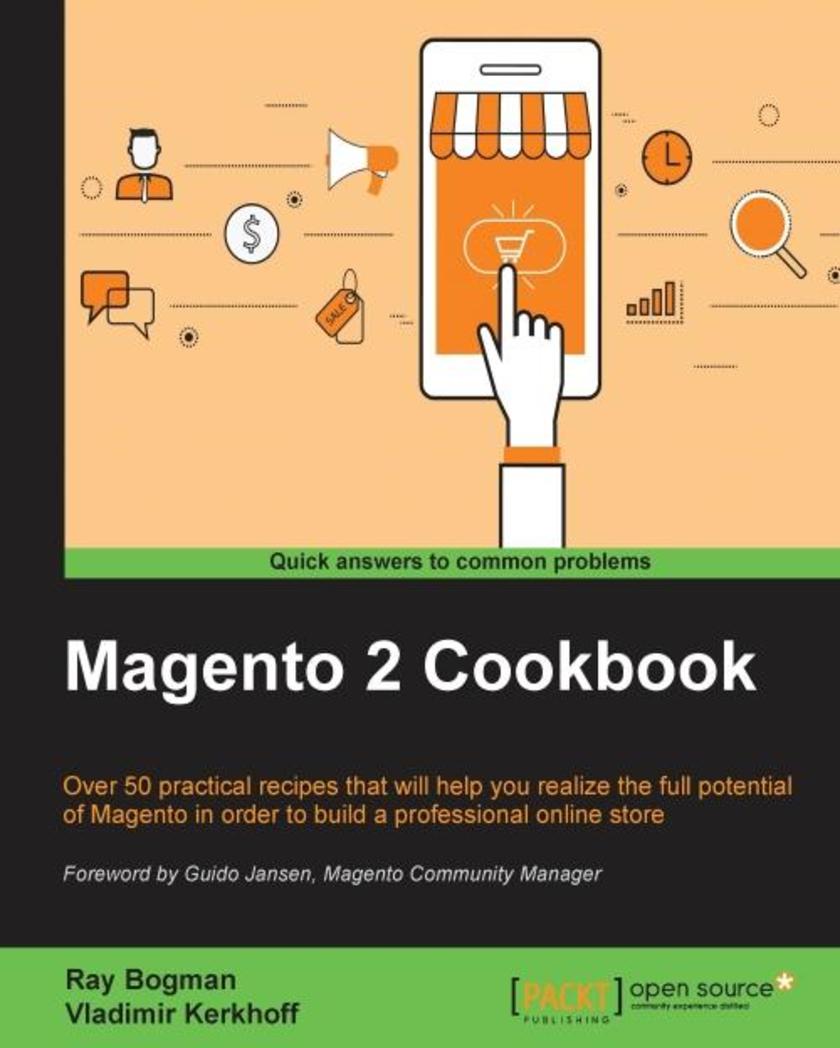
Magento 2 Cookbook
¥80.65
Over 50 practical recipes that will help you realize the full potential of Magento in order to build a professional online store About This Book Take advantage of the latest features in Magento 2 to set up an e-commerce store that fits your business needs Packed with several advanced recipes, not just to manage your online store, but to extend and design it as well Written in a cookbook style, you can pick and choose your recipe to carry out your day- to- day Magento store tasks Who This Book Is For The book is for existing Magento users who want to gain further expertise and insights into managing, designing, and extending their online store in Magento to fit their business needs. Working knowledge of Magento and basic familiarity with programming is expected. What You Will Learn Set up a Magento 2 project on Apache or Nginx. Transfer your Magento 1 database to Magento 2 using the Magento 2 system tools. Boost the performance of Magento 2 by enabling different types of caching. Build a Magento 2 multi-store by creating a root catalog, subdirectories, and products. Create and manage pages, blocks, and front-end apps. Manage your Magento store by setting up the correct TAX rules. Design custom themes within the Magento 2 framework. Create basic and advanced extensions using Magento 2. In Detail Magento 2 is an open source e-commerce platform that has all the functionality to function from small to large online stores. It is preferred by developers and merchants due to its new architecture, which makes it possible to extend the functionalities with plugins, a lot of which are now created by the community. This merchant and developer guide is packed with recipes that cover all aspects of Magento 2. The recipes start with simple how-to’s then delve into more advanced topics as the book progresses. We start with the basics of setting up a Magento 2 project on Apache or Nginx. Next, you will learn about basics including system tools and caching to get your Magento 2 system ready for the real work. We move on to simple tasks such as managing your store and catalog configuration. When you are familiar with this, we cover more complex features such as module and extension development. Then we will jump to the final part: advanced Magento 2 extensions. By the end of this book, you’ll be competent with all the development phases of Magento 2 and its most common elements. Style and approach Step by step guide for real world tasks for Magento users to gain a more advanced insight on managing, extending and designing their e-commerce store to fit their business needs.

Extending SaltStack
¥80.65
Extend the power of your infrastructure and applications with Salt modules About This Book Get the most up-to-date practical resource on writing new Salt modules and extending Salt Learn through use cases and encounter both commonly-used modules as well as advanced ones Effectively troubleshoot problems and hiccups encountered while building and putting modules to work Who This Book Is For This book is for both new and existing Salt developers who are looking to build and write new Salt modules. Some prior Python development experience is expected. What You Will Learn Understand the working of Salt's Loader system Write several of the most common types of Salt modules Interact between different kinds of modules and build new ones Submit open source modules upstream to the Salt project Make Salt interact with third-party services and applications In Detail Salt already ships with a very powerful set of tools, but that doesn't mean that they all suit your needs perfectly. By adding your own modules and enhancing existing ones, you can bring the functionality that you need to increase your productivity. Extending SaltStack follows a tutorial-based approach to explain different types of modules, from fundamentals to complete and full-functioning modules. Starting with the Loader system that drives Salt, this book will guide you through the most common types of modules. First you will learn how to write execution modules. Then you will extend the configuration using the grain, pillar, and SDB modules. Next up will be state modules and then the renderers that can be used with them. This will be followed with returner and output modules, which increase your options to manage return data. After that, there will be modules for external file servers, clouds, beacons, and finally external authentication and wheel modules to manage the master. With this guide in hand, you will be prepared to create, troubleshoot, and manage the most common types of Salt modules and take your infrastructure to new heights! Style and approach This book follows a step-by-step tutorial-based approach explaining the different types of modules, from fundamentals to complete and full-functioning modules.
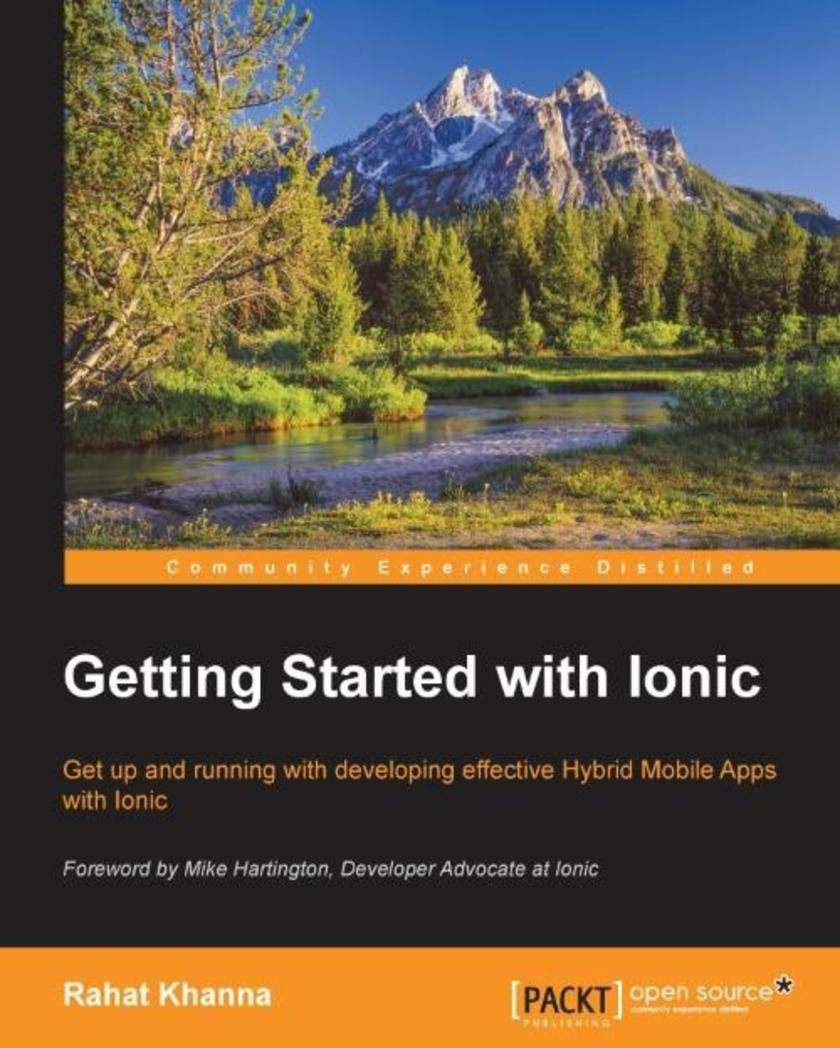
Getting Started with Ionic
¥54.49
Get up and running with developing effective Hybrid Mobile Apps with IonicAbout This BookDevelop engaging mobile experiences with a native-looking UI in Ionic and AngularJSBuild mobile applications with a native UI and interactions with device APIs using popular web technologies such as HTML, CSS, and JavaScriptCreate an e-commerce mobile app using tutorials and code samplesWho This Book Is ForThis book is ideal for any web developer who wants to enter into the world of mobile app development but has no clue where to start. Ionic is an ideal starting point and provides a smooth learning curve to help you build hybrid apps using web technologies and to develop native apps for iOS and Android, you do not need to know multiple languages. This book will also be useful for Hybrid App developers who have not found the perfect framework to ensure users get a rich experience from your apps.What You Will LearnGet to know about Hybrid Apps and AngularJSSet up a development environment to build Hybrid AppsNavigate around the components and routing in IonicUse different Ionic directives for a mobile-specific experienceIntegrate an Ionic App with backend web servicesWork with plugins to include native functionality in your hybrid appsTest your apps on real devicesBuild an e-commerce app for iOS and Android from scratchIn DetailHybrid Apps are a promising choice in mobile app development to achieve cost effectiveness and rapid development. However, they were not preferred over native apps until few years back due to a poor performance and bad user experience, but everything has changed with the release of Ionic. It has evolved as the most popular choice for Hybrid Mobile App development as it tends to match the native experience and provides robust components/tools to build apps.Getting Started with Ionic equips any web developer with the basic knowledge needed to use modern web technologies to build amazing hybrid mobile apps using Ionic.This fast-paced, practical book explains all the important concepts of AngularJS and Cordova Framework required to develop apps, then gives you a brief introduction to hybrid mobile applications. It will guide you through setting up the environment to develop mobile apps, and through the multiple options and features available in Ionic so you can use them in your mobile apps. Features such as the Side Menu, Tabs, Touch Interactions, and native features such as Bar Code, Camera, and Geolocations are all covered.. Finally, we’ll show you how to use Cordova plugins and publish your apps.Style and approachGetting started with Ionic is a compact, easy-to-follow guide to developing hybrid mobile apps using Ionic with real world examples of building an e-commerce app.

VMware Performance and Capacity Management - Second Edition
¥107.90
Master SDDC Operations with proven best practices About This Book Understand the drawbacks of the traditional paradigm and management that make operations difficult in SDDC Master performance and capacity management in Software-Defined Data Center Operationalize performance and capacity monitoring with proven dashboards Who This Book Is For This book is primarily for any system administrator or cloud infrastructure specialist who is interested in performance management and capacity management using VMware technologies. This book will also help IT professionals whose area of responsibility is not VMware, but who work with the VMware team. You can be Windows, Linux, Storage, or Network team; or application architects. Note that prior exposure to the VMware platform of data-center and cloud-based solutions is expected. What You Will Learn Simplify the task of performance and capacity management Master the counters in vCenter and vRealize Operations and understand their dependency on one another Educate your peers and management on SDDC Operations Complete your SDDC monitoring to include non-VMware components Perform SDDC performance troubleshooting Explore real-life examples of how super metric and advanced dashboards Introduce and implement a Performance SLA Accomplish your Capacity Management by taking into service tiering and performance SLA In Detail Performance management and capacity management are the two top-most issues faced by enterprise IT when doing virtualization. Until the first edition of the book, there was no in-depth coverage on the topic to tackle the issues systematically. The second edition expands the first edition, with added information and reorganizing the book into three logical parts. The first part provides the technical foundation of SDDC Management. It explains the difference between a software-defined data center and a classic physical data center, and how it impacts both architecture and operations. From this strategic view, it zooms into the most common challenges—performance management and capacity management. It introduces a new concept called Performance SLA and also a new way of doing capacity management. The next part provides the actual solution that you can implement in your environment. It puts the theories together and provides real-life examples created together with customers. It provides the reasons behind each dashboard, so that you get the understanding on why it is required and what problem it solves. The last part acts as a reference section. It provides a complete reference to vSphere and vRealize Operations counters, explaining their dependencies and providing practical guidance on the values you should expect in a healthy environment. Style and approach This book covers the complex topic of managing performance and capacity in an easy-to-follow style. It relates real-world scenarios to topics in order to help you implement the book’s teachings on the go.
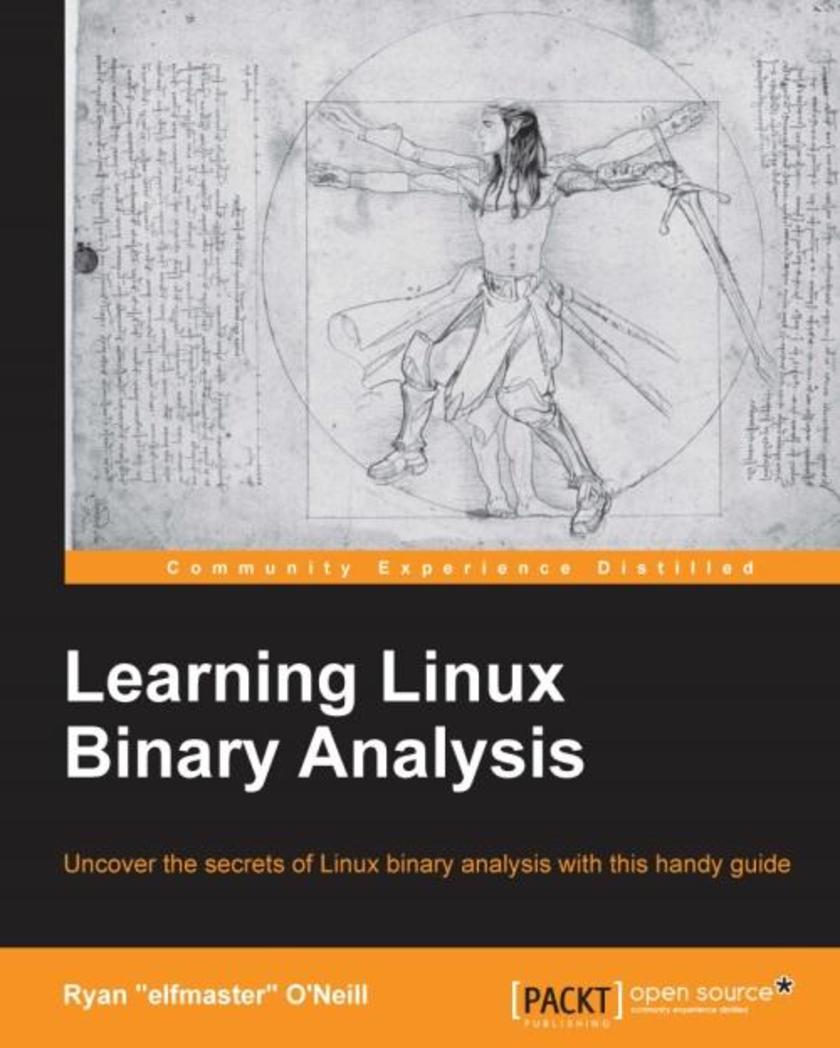
Learning Linux Binary Analysis
¥80.65
Uncover the secrets of Linux binary analysis with this handy guideAbout This BookGrasp the intricacies of the ELF binary format of UNIX and LinuxDesign tools for reverse engineering and binary forensic analysisInsights into UNIX and Linux memory infections, ELF viruses, and binary protection schemesWho This Book Is ForIf you are a software engineer or reverse engineer and want to learn more about Linux binary analysis, this book will provide you with all you need to implement solutions for binary analysis in areas of security, forensics, and antivirus. This book is great for both security enthusiasts and system level engineers. Some experience with the C programming language and the Linux command line is assumed.What You Will LearnExplore the internal workings of the ELF binary formatDiscover techniques for UNIX Virus infection and analysisWork with binary hardening and software anti-tamper methodsPatch executables and process memoryBypass anti-debugging measures used in malwarePerform advanced forensic analysis of binariesDesign ELF-related tools in the C languageLearn to operate on memory with ptraceIn DetailLearning Linux Binary Analysis is packed with knowledge and code that will teach you the inner workings of the ELF format, and the methods used by hackers and security analysts for virus analysis, binary patching, software protection and more.This book will start by taking you through UNIX/Linux object utilities, and will move on to teaching you all about the ELF specimen. You will learn about process tracing, and will explore the different types of Linux and UNIX viruses, and how you can make use of ELF Virus Technology to deal with them.The latter half of the book discusses the usage of Kprobe instrumentation for kernel hacking, code patching, and debugging. You will discover how to detect and disinfect kernel-mode rootkits, and move on to analyze static code. Finally, you will be walked through complex userspace memory infection analysis.This book will lead you into territory that is uncharted even by some experts; right into the world of the computer hacker.Style and approachThe material in this book provides detailed insight into the arcane arts of hacking, coding, reverse engineering Linux executables, and dissecting process memory. In the computer security industry these skills are priceless, and scarce. The tutorials are filled with knowledge gained through first hand experience, and are complemented with frequent examples including source code.
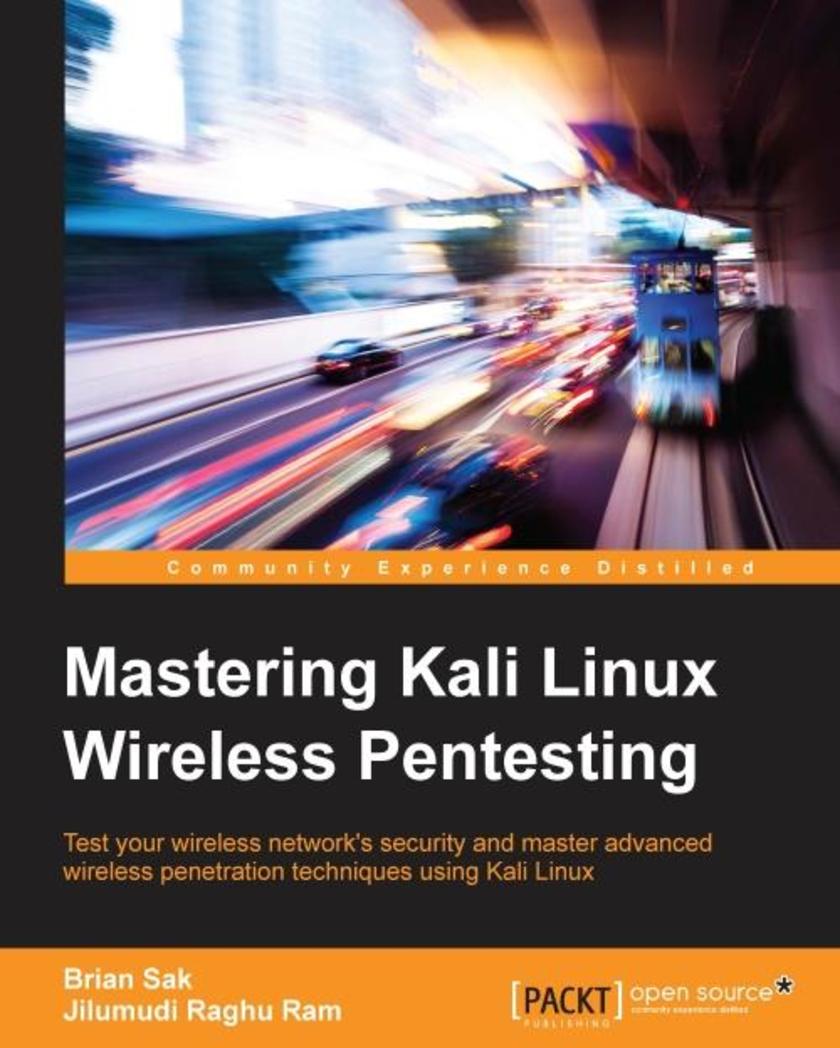
Mastering Kali Linux Wireless Pentesting
¥90.46
Test your wireless network’s security and master advanced wireless penetration techniques using Kali LinuxAbout This BookDevelop your skills using attacks such as wireless cracking, Man-in-the-Middle, and Denial of Service (DOS), as well as extracting sensitive information from wireless networksPerform advanced wireless assessment and penetration testsUse Embedded Platforms, Raspberry PI, and Android in wireless penetration testing with Kali LinuxWho This Book Is ForIf you are an intermediate-level wireless security consultant in Kali Linux and want to be the go-to person for Kali Linux wireless security in your organisation, then this is the book for you. Basic understanding of the core Kali Linux concepts is expected.What You Will LearnFingerprint wireless networks with the various tools available in Kali LinuxLearn various techniques to exploit wireless access points using CSRFCrack WPA/WPA2/WPS and crack wireless encryption using Rainbow tables more quicklyPerform man-in-the-middle attack on wireless clientsUnderstand client-side attacks, browser exploits, Java vulnerabilities, and social engineeringDevelop advanced sniffing and PCAP analysis skills to extract sensitive information such as DOC, XLS, and PDF documents from wireless networksUse Raspberry PI and OpenWrt to perform advanced wireless attacksPerform a DOS test using various techniques and toolsIn DetailKali Linux is a Debian-based Linux distribution designed for digital forensics and penetration testing. It gives access to a large collection of security-related tools for professional security testing - some of the major ones being Nmap, Aircrack-ng, Wireshark, and Metasploit.This book will take you on a journey where you will learn to master advanced tools and techniques to conduct wireless penetration testing with Kali Linux.You will begin by gaining an understanding of setting up and optimizing your penetration testing environment for wireless assessments. Then, the book will take you through a typical assessment from reconnaissance, information gathering, and scanning the network through exploitation and data extraction from your target. You will get to know various ways to compromise the wireless network using browser exploits, vulnerabilities in firmware, web-based attacks, client-side exploits, and many other hacking methods. You will also discover how to crack wireless networks with speed, perform man-in-the-middle and DOS attacks, and use Raspberry Pi and Android to expand your assessment methodology.By the end of this book, you will have mastered using Kali Linux for wireless security assessments and become a more effective penetration tester and consultant.Style and approachThis book uses a step-by-step approach using real-world attack scenarios to help you master the wireless penetration testing techniques.
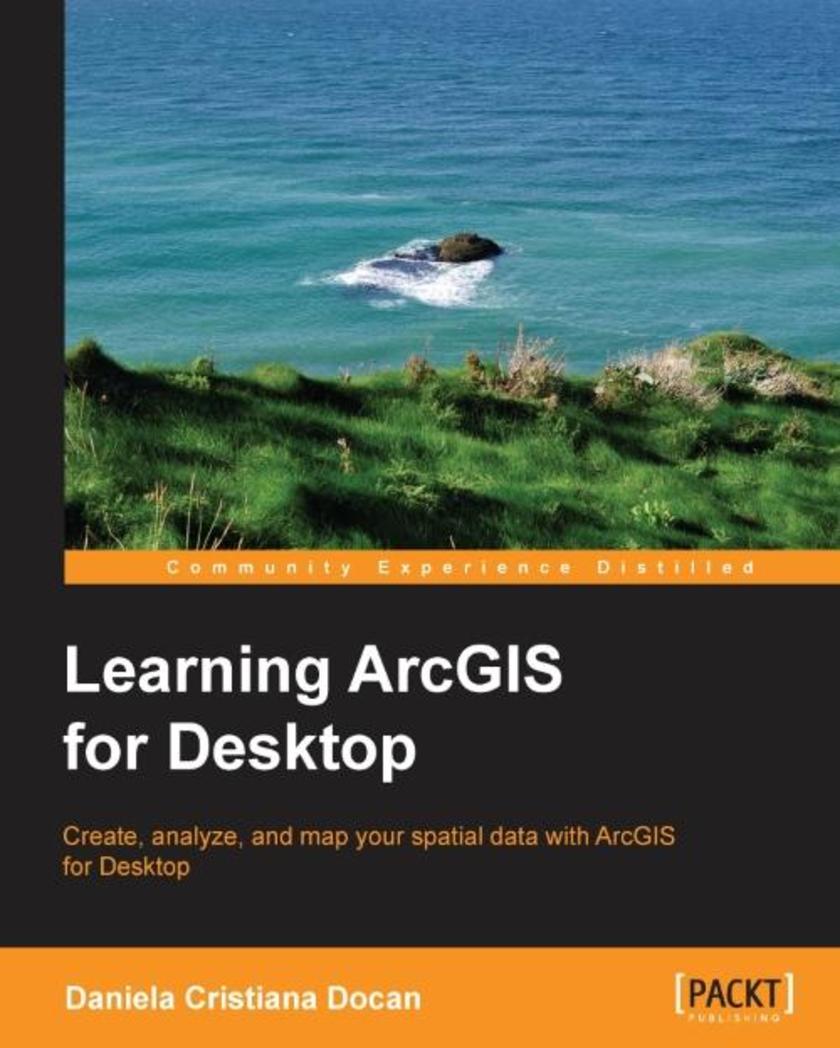
Learning ArcGIS for Desktop
¥90.46
Create, analyze, and map your spatial data with ArcGIS for Desktop About This Book Learn how to use ArcGIS for Desktop to create and manage geographic data, perform vector and raster analysis, design maps, and share your results Solve real-world problems and share your valuable results using the powerful instruments of ArcGIS for Desktop Step-by-step tutorials cover the main editing, analyzing, and mapping tools in ArcGIS for Desktop Who This Book Is For This book is ideal for those who want to learn how to use the most important component of Esri’s ArcGIS platform, ArcGIS for Desktop. It would be helpful to have a bit of familiarity with the basic concepts of GIS. Even if you have no prior GIS experience, this book will get you up and running quickly. What You Will Learn Understand the functionality of ArcGIS for Desktop applications Explore coordinate reference system concepts and work with different map projections Create, populate, and document a file geodatabase Manage, create, and edit feature shapes and attributes Built automate analysis workfl ows with ModelBuilder Apply basic principles of map design to create good-looking maps Analyze raster and three-dimensional data with the Spatial Analyst and 3D Analyst extensions In Detail ArcGIS for Desktop is one of the main components of the ESRI ArcGIS platform used to support decision making and solve real-world mapping problems. Learning ArcGIS for Desktop is a tutorial-based guide that provides a practical experience for those who are interested in start working with ArcGIS. The first five chapters cover the basic concepts of working with the File Geodatabase, as well as editing and symbolizing geospatial data. Then, the book focuses on planning and performing spatial analysis on vector and raster data using the geoprocessing and modeling tools. Finally, the basic principles of cartography design will be used to create a quality map that presents the information that resulted from the spatial analysis previously performed. To keep you learning throughout the chapters, all exercises have partial and final results stored in the dataset that accompanies the book. Finally, the book offers more than it promises by using the ArcGIS Online component in the tutorials as source of background data and for results sharing Style and approach This easy-to-follow guide is full of hands-on exercises that use open and free geospatial datasets. The basic features of the ArcGIS for Desktop are explained in a step-by-step style.
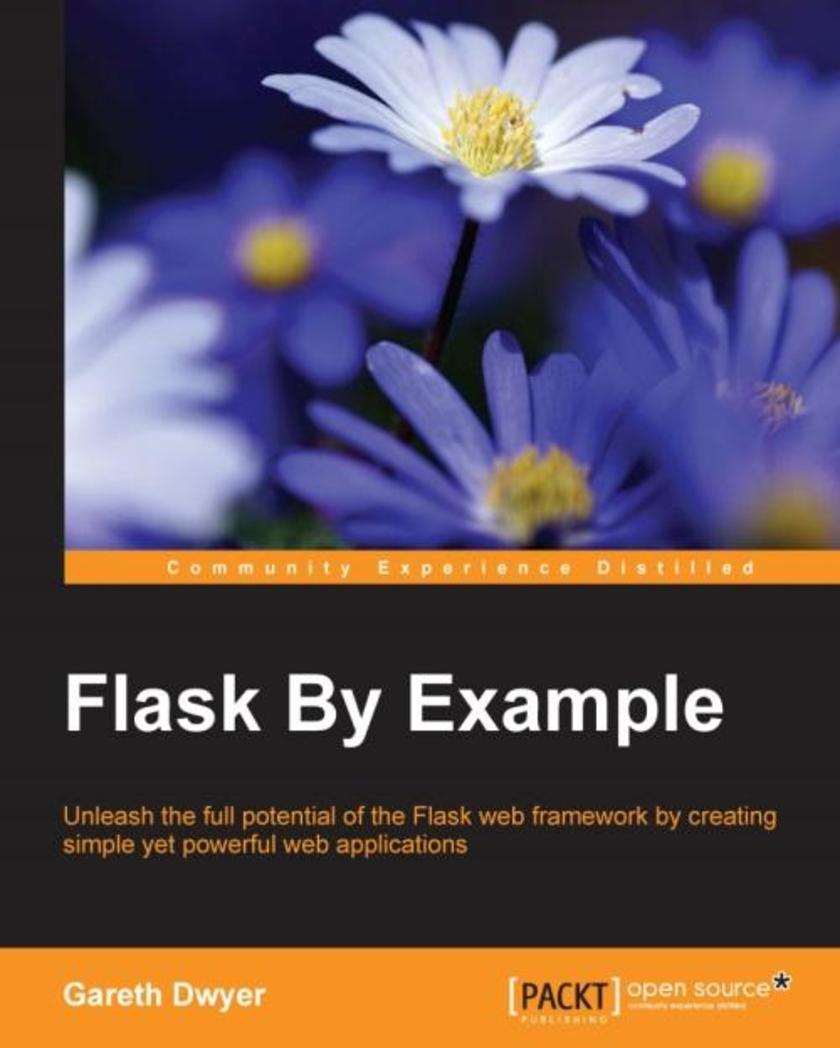
Flask By Example
¥63.21
Unleash the full potential of the Flask web framework by creating simple yet powerful web applications About This Book The most up-to-date book on Flask on the market Create your own world-class applications and master the art of Flask by unravelling its enigma through this journey This step-by-step tutorial is packed with examples on blending different technologies with Flask to get you up and running Who This Book Is For Have you looked at PHP and hated the clunky bloated syntaxOr looked at .Net and wished it was more open and flexibleMaybe you’ve tried your hand at GUI libraries in Python and found them hard to useIf your answer to any one of these questions is a yes, then this is just the book for you. It is also intended for people who know the basics of Python and want to learn how to use it to build powerful solutions with a web front-end. What You Will Learn Build three web applications from the ground up using the powerful Python micro framework, Flask. Dynamically display data to your viewers, based on their requests Store user and static data in SQL and NoSQL databases and use this data to power your web applications Create a good user experience by combining HTML, CSS, and JavaScript Harness the convenience of freely available APIs, including OpenWeatherMap, Open Exchange Rates, and bitly Extend your applications to build advanced functionality, such as a user account control system using Flask-Login Learn about web application security and defend against common attacks, such as SQL injection and XSS In Detail This book will take you on a journey from learning about web development using Flask to building fully functional web applications. In the first major project, we develop a dynamic Headlines application that displays the latest news headlines along with up-to-date currency and weather information. In project two, we build a Crime Map application that is backed by a MySQL database, allowing users to submit information on and the location of crimes in order to plot danger zones and other crime trends within an area. In the final project, we combine Flask with more modern technologies, such as Twitter's Bootstrap and the NoSQL database MongoDB, to create a Waiter Caller application that allows restaurant patrons to easily call a waiter to their table. This pragmatic tutorial will keep you engaged as you learn the crux of Flask by working on challenging real-world applications. Style and approach This book will provide you with rich, practical experience of Flask. Every technology, that is employed along with Flask is comprehensively introduced, while the book focusses on developing web applications. Pointers to educational material are always given if you want to gain in-depth knowledge of the various technologies used.
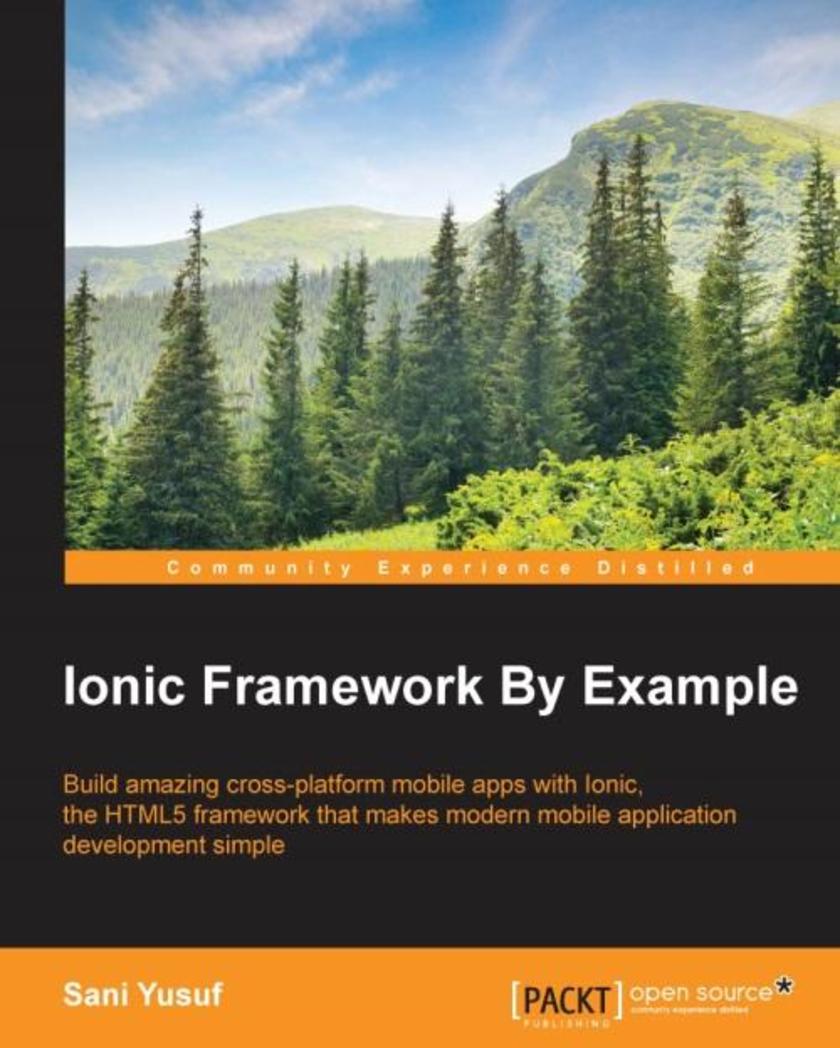
Ionic Framework By Example
¥54.49
Build amazing cross-platform mobile apps with Ionic, the HTML5 framework that makes modern mobile application development simpleAbout This BookLearn how to use one of the most exciting mobile development frameworks around to build even better appsFollow the featured sample projects to experience Ionic’s impressive capabilitiesExtend your developer skillset to build, test, and launch mobile apps with confidenceWho This Book Is ForThis book is for anyone who wants to see Ionic in action - and find out how it could transform the way they build mobile apps. If you’re a JavaScript web developer, you’ll be building great projects in no time.What You Will LearnLearn Ionic by creating three complete mobile applicationsGet to know the Ionic CLIAdd basic and advanced features to the Ionic frameworkConnect an Ionic app with a Firebase back endIntegrate PhoneGap plugins with NG-CordovaTest your apps to improve and optimize performanceIn DetailChange doesn’t have to be challenging. Sometimes it can be simple – sometimes it just makes sense. With Ionic, mobile development has never been so simple, so elegant and obvious. By helping developers to harness AngularJS and HTML5 for mobile development, it’s the perfect framework for anyone obsessed with performance, and anyone that understands just how important a great user experience really is.This book shows you how to get started with Ionic framework immediately. But it doesn’t just give you instructions and then expect you to follow them. Instead it demonstrates what Ionic is capable of through three practical projects you can follow and build yourself.From a basic to-do list app, a London tourist app, to a complete social media app, all three projects have been designed to help you learn Ionic at its very best. From setting up your project to developing on both the server side and front end, and best practices for testing and debugging your projects, you’ll quickly become a better mobile developer, delivering high performance mobile apps that look awesome.Ionic Framework by Example is for people who don’t want to learn now, build later – it’s for people who want to learn and build at the same time – so they can meet today’s mobile development challenges head on and deliver better products than anyone else.Style and approachThis book isn’t just an instruction manual. It doesn’t just tell you what to do – it shows you. Featuring three sample projects, it’s been created so you can get started with Ionic immediately.
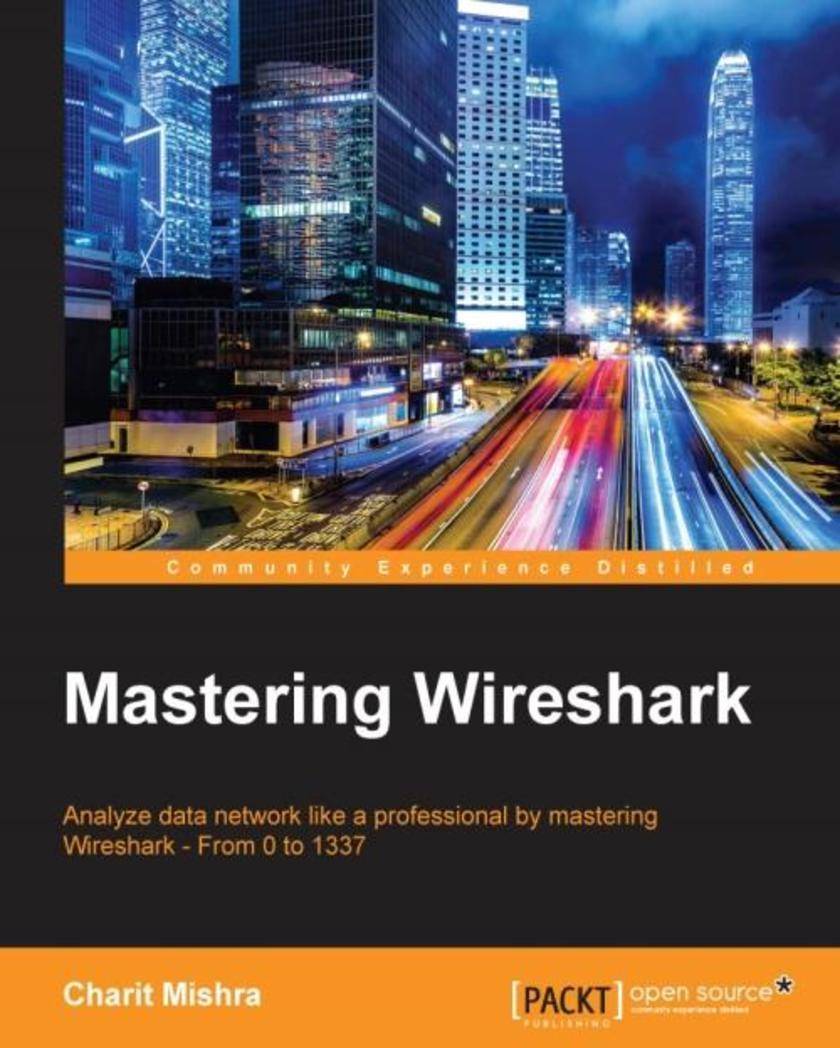
Mastering Wireshark
¥90.46
Analyze data network like a professional by mastering Wireshark - From 0 to 1337 About This Book Master Wireshark and train it as your network sniffer Impress your peers and get yourself pronounced as a network doctor Understand Wireshark and its numerous features with the aid of this fast-paced book packed with numerous screenshots, and become a pro at resolving network anomalies Who This Book Is For Are you curious to know what’s going on in a networkDo you get frustrated when you are unable to detect the cause of problems in your networksThis is where the book comes into play. Mastering Wireshark is for developers or network enthusiasts who are interested in understanding the internal workings of networks and have prior knowledge of using Wireshark, but are not aware about all of its functionalities. What You Will Learn Install Wireshark and understand its GUI and all the functionalities of it Create and use different filters Analyze different layers of network protocols and know the amount of packets that flow through the network Decrypt encrypted wireless traffic Use Wireshark as a diagnostic tool and also for network security analysis to keep track of malware Troubleshoot all the network anomalies with help of Wireshark Resolve latencies and bottleneck issues in the network In Detail Wireshark is a popular and powerful tool used to analyze the amount of bits and bytes that are flowing through a network. Wireshark deals with the second to seventh layer of network protocols, and the analysis made is presented in a human readable form. Mastering Wireshark will help you raise your knowledge to an expert level. At the start of the book, you will be taught how to install Wireshark, and will be introduced to its interface so you understand all its functionalities. Moving forward, you will discover different ways to create and use capture and display filters. Halfway through the book, you’ll be mastering the features of Wireshark, analyzing different layers of the network protocol, looking for any anomalies. As you reach to the end of the book, you will be taught how to use Wireshark for network security analysis and configure it for troubleshooting purposes. Style and approach Every chapter in this book is explained to you in an easy way accompanied by real-life examples and screenshots of the interface, making it easy for you to become an expert at using Wireshark.




 购物车
购物车 个人中心
个人中心



